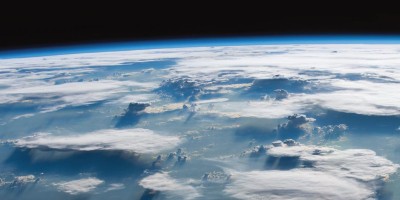Satellite measurements show that dust emission is enhanced following large wildfires, producing considerable dust loadings for days to weeks over normally dust-free regions. These sequential fire and dust extremes will likely become more frequent and severe under global warming, having increased societal and ecological impacts.

References
Bowman, D. M. J. S. et al. Vegetation fires in the Anthropocene. Nat. Rev. Earth Environ. 1, 500–515 (2020). A review article that presents the societal and ecological impacts of wildfires.
Hamilton, D. S. et al. Earth, wind, fire, and pollution: aerosol nutrient sources and impacts on ocean biogeochemistry. Ann. Rev. Mar. Sci. 14, 303–330 (2022). A review article that discusses the interplay of dust and fire aerosol sources.
Ginoux, P., Prospero, J. M., Gill, T. E., Hsu, N. C. & Zhao, M. Global-scale attribution of anthropogenic and natural dust sources and their emission rates based on MODIS Deep Blue aerosol products. Rev. Geophys. 50, RG3005 (2012). A review article that presents global dust sources and the role of dust in the Earth system.
Jones, M. W., Abatzoglou, J. T. & Veraverbeke, S. Global and regional trends and drivers of fire under climate change. Rev. Geophys. 60, e2020RG000726 (2020). A review article that summarizes the trends and drivers of fire under climate change.
Yu, Y. & Ginoux, P. Assessing the contribution of the ENSO and MJO to Australian dust activity based on satellite- and ground-based observations. Atmos. Chem. Phys. 21, 8511–8530 (2021). A study on the contribution of large-scale climate variability to dust activity in Australia.
Additional information
Publisher’s note Springer Nature remains neutral with regard to jurisdictional claims in published maps and institutional affiliations.
This is a summary of: Yu, Y. & Ginoux, P. Enhanced dust emission following large wildfires due to vegetation disturbance. Nat. Geosci. https://doi.org/10.1038/s41561-022-01046-6 (2022).
Rights and permissions
About this article
Cite this article
Dust emission increases following large wildfires. Nat. Geosci. 15, 867–868 (2022). https://doi.org/10.1038/s41561-022-01047-5
Published:
Issue Date:
DOI: https://doi.org/10.1038/s41561-022-01047-5
- Springer Nature Limited


